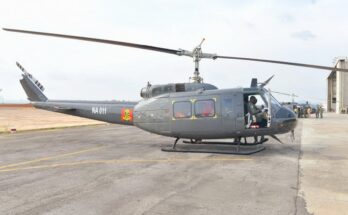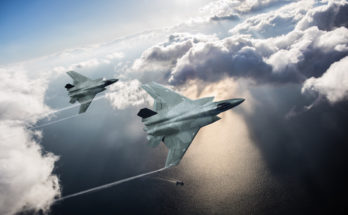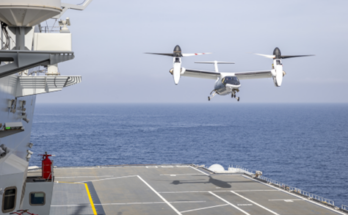
As the war in Ukraine nears the two-year mark, the frontlines have been defined by increasing stagnancy as the Ukrainian counteroffensive collides with Russia’s fortified defensive lines. With progress reduced and territorial changes becoming more limited, the conflict has been characterized as static by some. While advances may be slowing on land, in the Black Sea, where a fleetless Ukraine wages war against the world’s second-largest navy, the conflict is anything but.
Moscow’s Black Sea Fleet is a storied outfit that looms large in the consciousness of the Russian military. Established in 1783 in the Crimean port of Sevastopol, it has seen action in the Crimean War, the Russo-Turkish War and both World Wars. In today’s conflict, the fleet is involved in launching missiles and munitions and maintaining Russia’s unofficial blockade of the northwestern Black Sea. Since Moscow’s withdrawal from the Black Sea Grain Deal in July, Russian ships have sought to strangle exports, primarily agricultural products, from Ukraine. Agricultural goods such as wheat and barley are vital to the Ukrainian economy, comprising 40 percent of the country’s overall exports in 2021.
Ukraine has not boasted a significant naval component since Russia’s 2014 annexation of Crimea, during which Moscow seized around 75 percent of the Ukrainian fleet, occupied most of its naval infrastructure and accepted the defection of around 5,000 Ukrainian sailors. At the onset of the 2022 invasion, Ukraine lost more ships and was even forced to scuttle its flagship, the frigate Hetman Sahaidachny. With the bulk of its surface ships seized or destroyed, Kyiv rebuilt with smaller, cheaper vessels, constructing what one Western official described as a ‘mosquito navy’. Despite the overwhelming difference in mass and firepower, Kyiv has performed remarkably well in conducting novel and successful attacks on Russia’s naval assets.
Relying on missile strikes, unmanned sea systems, and daring commando raids into occupied Crimea to strike at Russian vessels and infrastructure, Ukrainian forces have arguably pioneered tomorrow’s naval battles, and hastily written a handbook on asymmetrical maritime warfare. The capstone of this strategy was the sinking of the Black Sea Fleet’s flagship, Moskva, in April 2022 using two indigenously produced Neptune anti-ship missiles. Perhaps more devastating to the Russian war effort were the successful naval drone and missile attacks conducted on September 13 in Sevastopol, which significantly damaged and likely destroyed the landing ship Minsk and the attack submarine Rostov-on-Don, while also destroying a key drydock and repair facility used by the fleet. Ukrainian special forces command later claimed a September 22 attack had struck the Black Sea Fleet’s headquarters, killing 34 officers allegedly including the commander of the fleet, Adm. Viktor Sokolov, which Moscow has disputed.
In response to growing naval threats from Kyiv, Russia relocated two frigates, five landing ships, three attack submarines, and several smaller vessels from Sevastopol. Similar strikes, escalating in the past few months have yielded a growing list of naval casualties and headaches for Russian forces.
Symbolically, these strikes show the continuing perseverance of Ukrainian forces and remind the world that the Russian military, whether on land or sea, is not invincible. Particularly when dealing with the storied Black Sea Fleet, Ukrainian attacks strike not only the fleet but also Russian pride. The innovative and generally low-cost attacks conducted at sea reflect the ethos of a David vs. Goliath battle which has come to define the broader war.
Strategically, Ukraine’s attacks play a vital role in denying Russian tactical goals in the conflict. By damaging ships and key infrastructure, and in doing so deterring the Russians from deploying their fleet fully to the more advantageous port of Sevastopol, they limit the range of usable weapons in the land war. It further prevents Moscow from implementing its blockade effectively, denying the Black Sea Fleet unfettered navigation access. By preserving the economic lifeline that Moscow seeks to sever, Ukraine’s naval strategy helps keep the country afloat in its other endeavors. This maritime area denial also prevents Russian amphibious landings or commando raids on the coast near Odessa, a feat which, while unlikely, could be devastating if accomplished successfully. The attacks on naval traffic and infrastructure, including airbases, also work towards hamstringing Russia’s already stretched logistics networks, a persistent issue for Putin’s military during the war.
The unfolding Battle of the Black Sea, despite initial gains by Russia, has turned distinctly in favor of Kyiv. While the battlefield on land becomes static, the war at sea has never been more dynamic. Ukrainian tactics shatter Russian comfort and force strategic re-evaluation, limiting the effective use of its superior naval forces and preventing economic strangulation by the blockade. While the war will not be won at sea, it could very well be lost at sea if Moscow were to successfully dominate the theater. So far, however, Ukraine has proven not only durable but persistent and adaptive, making effective use of limited resources.

Tom Freebairn is a weapons analyst with Military Periscope covering naval affairs and maritime systems. He pursued an undergraduate degree in International Relations and Modern History, followed by a master's in Middle East, Caucasus, and Central Asia Security Studies from the University of St. Andrews. His master's thesis focused on the relationship between oil and separatist politics in Northern Iraq. Tom's interests include the politics of energy, ethnic separatism, the evolution of naval warfare, and classical history.




